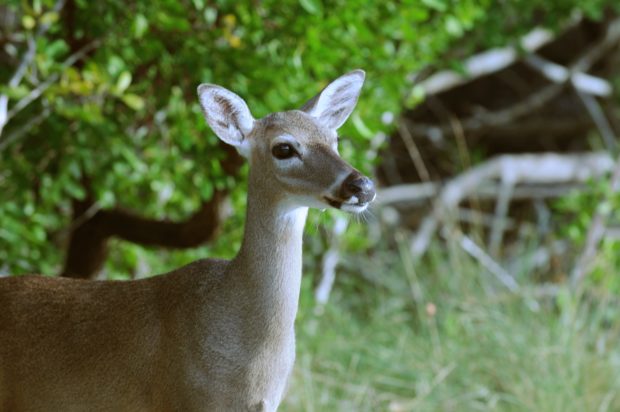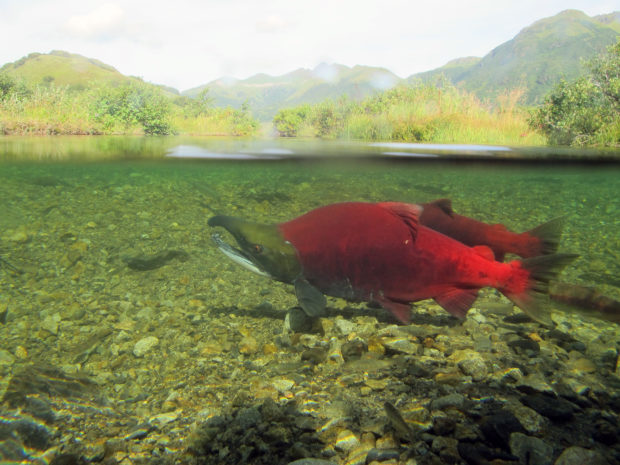We have much more to do and your continued support is needed now more than ever.
Unnatural Disasters Map 2.0: Interactive Map Illustrates Growing Climate Impacts

Today, the National Wildlife Federation launches the second iteration of an interactive story map to illustrate where natural disasters, many of which are exacerbated by climate change, have hit in recent years across the United States. As in version one, the harmful impacts of hurricanes, algal outbreaks, wildfires, and droughts on local economies and wildlife are depicted with information on the most recent disasters from 2019, including Hurricane Dorian and the Kincade Fire.

Among the disasters fueled by climate change highlighted in Unnatural Disasters:
- Monster storms and record flooding: In addition to devastating communities, hurricanes can flood the habitats endangered species depend on, placing them at greater risk of extinction. In 2017, Hurricane Irma wiped out as much as 22 percent of Florida’s Key deer (previously estimated to be just 1,000 deer) and Hurricane Harvey dropped the wild population at Texas’ Attwater Prairie Chicken National Wildlife Refuge down to just 12 birds. And, this year historic flooding in the Midwest has caused major issues for deer fawns and ground-nesting birds like pheasant and quail.
- Toxic algae outbreaks: A threat from coast to coast, outbreaks of algae can cause human and wildlife illness, and impact fishing and tourism. Florida’s 2018 red tide and blue-green outbreaks sickened dozens of people and killed thousands of fish, and killed or sickened hundreds of birds and endangered sea turtles, along with manatees, dolphins, sea turtles, and a whale shark. In 2007, dead or dying sea otters were found in California, with investigators blaming toxic blue-green algae that washed into marine ecosystems.
- Extreme heat and drought: Many states experienced record breaking heat in 2019. July was the hottest month in recorded history for Alaska, and scientists observed die-offs of sockeye, chum, and pink salmon as a result. Decreased levels of oxygen in the water, due to extreme heat, caused the salmon to suffocate. The director of the Yukon Inter-Tribal Fish Commission counted 850 dead salmon at Alaska’s Koyokuk River, but estimated that the total was likely four to 10 times larger.
The International Panel on Climate change (IPCC) cautions that global greenhouse gas emissions should be cut in half by 2030 and reach net zero emission by mid-century in order to avoid the most catastrophic consequences of climate change. The latest science is an unambiguous warning: we may only have a decade to prevent irreversible damage to the global climate and the people and wildlife living on Earth. Right now, it is imperative that lawmakers and other leaders in the public and private sectors support cuts to industrial carbon pollution, investments in clean energy and transit, and expanded adaptation and resilience plans to reduce risks from climate impacts.

Federal policies can both reduce the pollution fueling these natural disasters, as well as better prepare communities and wildlife for the effects of these unavoidable disasters.
To get involved and make your voice heard, ACT NOW to press lawmakers to support expansion of zero-carbon energy, electric vehicles, and energy efficiency in homes and businesses – all important steps to start de-carbonize our economy and meet climate goals!
Take Action!
This blog is a part of a series on climate impacts and climate-exacerbated natural disasters. More blogs in the series:
- Compounding Challenges: Extreme Heat Threatens Communities and Wildlife More Than Ever in The Age of Climate Change and COVID-19
- Heating Up: Climate Change Harms Alaska’s Communities & Wildlife
- Swept Away: Protecting Midwest Communities & Wildlife From Extreme Flooding
To read more about the National Wildlife Federation’s climate change policy recommendations for adaptation and mitigation, click here!





















